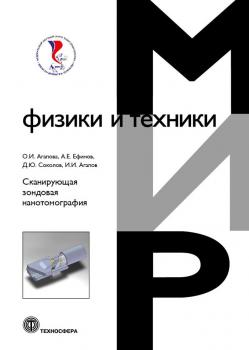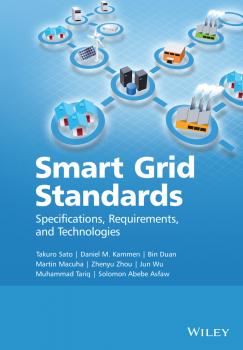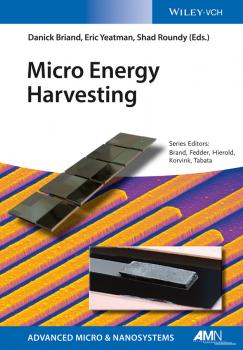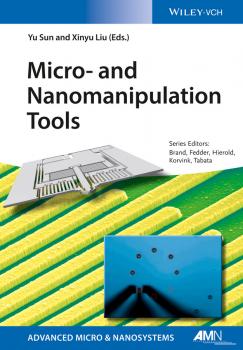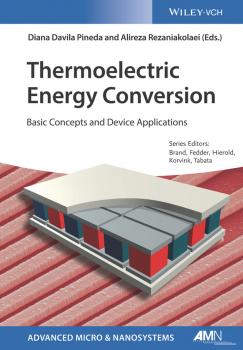Техническая литература
Различные книги в жанре Техническая литератураТранспорт и логистика в Арктике. Альманах 2016. Выпуск 2. Северный морской путь: курс – Дальний Восток
В издании последовательно рассмотрены основные проблемы комплексного подхода к созданию национального мультимодального транспортного коридора, ориентированного на круглогодичное функционирование, включающего Северный морской путь, и тяготеющие к нему широтные и меридиональные речные, автомобильные и железнодорожные коммуникации, а также аэропортовую сеть. Рассмотрены вопросы создания единого органа управления – транспортного оператора, построения транспортно-логистической инфраструктуры Арктической зоны, конкретные проекты, такие как Северный широтный ход, Мурманский транспортный узел, Белкомур, открытие Арктической контейнерной линии Мурманск – Петропавловск – Мурманск и др. Каждый раздел представлен признанными специалистами в своей области. Несомненным достоинством альманаха является системный подход к теме, который заключается в том, что при рассмотрении проблем развития транспортной инфраструктуры подробно обсуждаются вопросы международного сотрудничества, связи, навигации, гидрометеорологического обеспечения, транспортной и экологической безопасности, образования.
Сканирующая зондовая нанотомография
Монография посвящена разработанному в ФГБУ «ФНЦ трансплантологии и искусственных органов им. ак. В. И. Шумакова» Минздрава России современному методу исследования трехмерных микронаноструктур – сканирующей зондовой нанотомографии (СЗНТ), основанной на комбинации сканирующей зондовой микроскопии и ультрамикротомии. В книге проанализированы преимущества и недостатки СЗНТ в сравнении с другими методами анализа ультраструктуры, представлены результаты исследований трехмерной структуры различных биоматериалов и биологических объектов. Рассмотрены ключевые технические решения разработанных аппаратных комплексов для СЗНТ и криоСЗНТ и особенности их патентования. Книга предназначена для специалистов в области нанотехнологий, микроскопии высокого разрешения, структурной биологии, химии полимеров, науки о материалах и других специальностей.
EPD Congress 2015
EPD Congress is an annual collection of conference proceedings that addresses extraction and processing metallurgy. The papers in this book are drawn from symposia held at the 2015 Annual Meeting of The Minerals, Metals & Materials Society. The 2015 edition includes papers from the following symposia: Materials Processing Fundamentals Solar Cell Silicon High-Temperature Electrochemistry II
Measurement Technology for Micro-Nanometer Devices
A fully comprehensive examination of state-of-the-art technologies for measurement at the small scale • Highlights the advanced research work from industry and academia in micro-nano devices test technology • Written at both introductory and advanced levels, provides the fundamentals and theories • Focuses on the measurement techniques for characterizing MEMS/NEMS devices
Printed Electronics. Materials, Technologies and Applications
This book provides an overview of the newly emerged and highly interdisciplinary field of printed electronics • Provides an overview of the latest developments and research results in the field of printed electronics • Topics addressed include: organic printable electronic materials, inorganic printable electronic materials, printing processes and equipments for electronic manufacturing, printable transistors, printable photovoltaic devices, printable lighting and display, encapsulation and packaging of printed electronic devices, and applications of printed electronics • Discusses the principles of the above topics, with support of examples and graphic illustrations • Serves both as an advanced introductory to the topic and as an aid for professional development into the new field • Includes end of chapter references and links to further reading
Smart Grid Standards. Specifications, Requirements, and Technologies
A fully comprehensive introduction to smart grid standards and their applications for developers, consumers and service providers The critical role of standards for smart grid has already been realized by world-wide governments and industrial organizations. There are hundreds of standards for Smart Grid which have been developed in parallel by different organizations. It is therefore necessary to arrange those standards in such a way that it is easier for readers to easily understand and select a particular standard according to their requirements without going into the depth of each standard, which often spans from hundreds to thousands of pages. The book will allow people in the smart grid areas and in the related industries to easily understand the fundamental standards of smart grid, and quickly find the building-block standards they need from hundreds of standards for implementing a smart grid system. The authors highlight the most advanced works and efforts now under way to realize an integrated and interoperable smart grid, such as the “NIST Framework and Roadmap for Smart Grid Interoperability Standards Release 2.0”, the” IEC Smart Grid Standardization Roadmap”, the ISO/IEC’s “Smart Grid Standards for Residential Customers”, the ZigBee/HomePlug’s “Smart Energy Profile Specification 2.0”, IEEE’s P2030 “Draft Guide for Smart Grid Interoperability of Energy Technology and Information Technology Operation with the Electric Power System (EPS), and End-Use Applications and Loads”, and the latest joint research project results between the world’s two largest economies, US and China. The book enables readers to fully understand the latest achievements and ongoing technical works of smart grid standards, and assist industry utilities, vendors, academia, regulators, and other smart grid stakeholders in future decision making. The book begins with an overview of the smart grid, and introduces the opportunities in both developed and developing countries. It then examines the standards for power grid domain of the smart grid, including standards for blackout prevention and energy management, smart transmission, advanced distribution management and automation, smart substation automation, and condition monitoring. Communication and security standards as a whole are the backbone of smart grid and their standards, including those for wired and wireless communications, are then assessed. Finally the authors consider the standards and on-going work and efforts for interoperability and integration between different standards and networks, including the latest joint research effort between the world’s two largest economies, US and China. A fully comprehensive introduction to smart grid standards and their applications for developers, consumers and service providers Covers all up-to-date standards of smart grid, including the key standards from NIST, IEC, ISO ZigBee, IEEE, HomePlug, SAE, and other international and regional standardization organizations. The Appendix summarizes all of the standards mentioned in the book Presents standards for renewable energy and smart generation, covering wind energy, solar voltaic, fuel cells, pumped storage, distributed generation, and nuclear generation standards. Standards for other alternative sources of energy such as geothermal energy, and bioenergy are briefly introduced Introduces the standards for smart storage and plug-in electric vehicles, including standards for distributed energy resources (DER), electric storage, and E-mobility/plug-in vehicles The book is written in an accessible style, ideal as an introduction to the topic, yet contains sufficient detail and research to appeal to the more advanced and specialist reader.<
Micro Energy Harvesting
With its inclusion of the fundamentals, systems and applications, this reference provides readers with the basics of micro energy conversion along with expert knowledge on system electronics and real-life microdevices. The authors address different aspects of energy harvesting at the micro scale with a focus on miniaturized and microfabricated devices. Along the way they provide an overview of the field by compiling knowledge on the design, materials development, device realization and aspects of system integration, covering emerging technologies, as well as applications in power management, energy storage, medicine and low-power system electronics. In addition, they survey the energy harvesting principles based on chemical, thermal, mechanical, as well as hybrid and nanotechnology approaches. In unparalleled detail this volume presents the complete picture – and a peek into the future – of micro-powered microsystems.
Micro- and Nanomanipulation Tools
Combining robotics with nanotechnology, this ready reference summarizes the fundamentals and emerging applications in this fascinating research field. This is the first book to introduce tools specifically designed and made for manipulating micro- and nanometer-sized objects, and presents such examples as semiconductor packaging and clinical diagnostics as well as surgery. The first part discusses various topics of on-chip and device-based micro- and nanomanipulation, including the use of acoustic, magnetic, optical or dielectrophoretic fields, while surface-driven and high-speed microfluidic manipulation for biophysical applications are also covered. In the second part of the book, the main focus is on microrobotic tools. Alongside magnetic micromanipulators, bacteria and untethered, chapters also discuss silicon nano- and integrated optical tweezers. The book closes with a number of chapters on nanomanipulation using AFM and nanocoils under optical and electron microscopes. Exciting images from the tiniest robotic systems at the nano-level are used to illustrate the examples throughout the work. A must-have book for readers with a background ranging from engineering to nanotechnology.
Thermoelectric Energy Conversion. Basic Concepts and Device Applications
The latest volume in the well-established AMN series, this ready reference provides an up-to-date, self-contained summary of recent developments in the technologies and systems for thermoelectricity. Following an initial chapter that introduces the fundamentals and principles of thermoelectricity, subsequent chapters discuss the synthesis and integration of various bulk thermoelectric as well as nanostructured materials. The book then goes on to discuss characterization techniques, including various light and mechanic microscopy techniques, while also summarizing applications for thermoelectric materials, such as micro- and nano-thermoelectric generators, wearable electronics and energy conversion devices. The result is a bridge between industry and scientific researchers seeking to develop thermoelectric generators.

